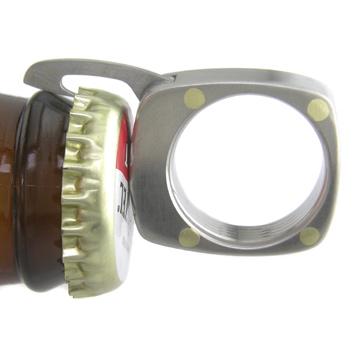sbarton22
Member
I'm looking for some bright ideas. I would like to make some bottle openers, and it could be turned or otherwise. I've seen and used the typical "turned openers" you would find at craft supplies, penn state, rockler, etc. Those are great.
However, what I am really looking for is something different. I don't know what that might be, but not the standard fare. To me, those openers telegraph the lathe aspect of the final product. I'm looking for something different.
I have been thinking about the flat type with the circle on one end and opener on the other (see below), but I can't quite figure out how get wood to stick to it w/o a bolt or screw. I don't really understand the rivet things that hold a knife together either, so I'm just an idiot on those things.
Any ideas or suggestions would be greatly appreciated.
flat opener
However, what I am really looking for is something different. I don't know what that might be, but not the standard fare. To me, those openers telegraph the lathe aspect of the final product. I'm looking for something different.
I have been thinking about the flat type with the circle on one end and opener on the other (see below), but I can't quite figure out how get wood to stick to it w/o a bolt or screw. I don't really understand the rivet things that hold a knife together either, so I'm just an idiot on those things.
Any ideas or suggestions would be greatly appreciated.
flat opener


